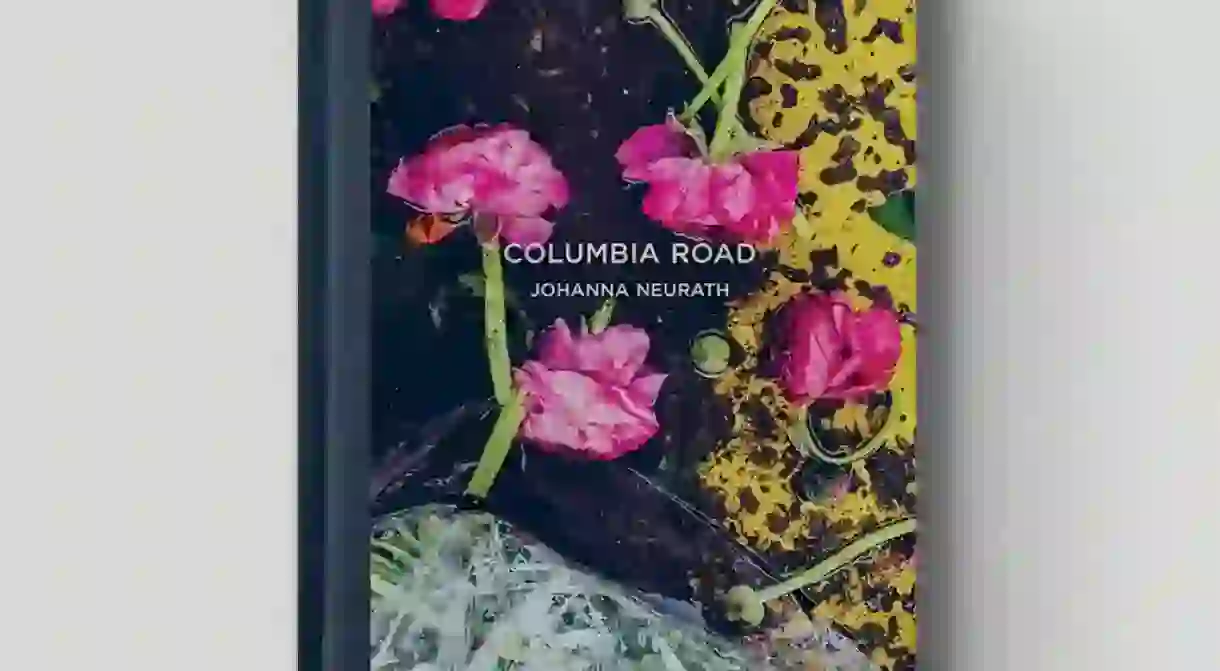Exploring Columbia Road Flower Market In This Stunning Photography Book

Johanna Neurath’s documentation of London’s most iconic flower market, is an exercise in photographic alchemy. Turning her camera away from what’s on show to what’s left – discarded petals in puddles, showers of blossom on car bonnets – she invites us to see that beauty can be found in the most unlikely corners of the urban landscape. Published by the pioneering Hoxton Mini Press, and with a colourful introduction by Rachel Segal Hamilton, take a stroll down Columbia Road and appreciate its beauty like never before.
Introduction to Columbia Road
by Rachel Segal Hamilton
Markets have always held a special allure for photographers of urban life. André Kertész documented flower sellers in Paris. Eugène Atget did the same for flea markets. So did Bill Brandt in London. Street photography is about authenticity and improvisation. It’s about embracing the everyday and the unexpected. It’s about chucking yourself, camera-first, into the throng and seeing where it takes you. And what better spot to do this than a market? Like a touring theatre, it roars in at dawn, transforming the street into a makeshift stage, festooned with eye-catching wares, peopled by a cast of boisterous barrow boys, meandering tourists, curious locals, savvy regulars. A proper slice of the city – which, by the end of the day, is gone.

Like a touring theatre, it roars in at dawn, transforming the street into a makeshift stage, festooned with eye-catching wares, peopled by a cast of boisterous barrow boys, meandering tourists, curious locals, savvy regulars.

Every Sunday, Columbia Road in Hackney is home to London’s biggest dedicated flower market. Originally a path used to transport cattle down to Smithfield’s slaughterhouses, by the mid 19th century the area had become a slum. In 1869, philanthropist Angela Burdett-Coutts bought the land and redeveloped it, building a covered food market there. Initially the flower market ran on a Saturday but it later switched to a Sunday to suit the East End’s many Jewish vendors. Head down that way now and you’ll find stallholders whose market lineage goes back generations, as well as a newer contingent of Hackneyites selling flat whites, vintage fashion or graphic art from the Victorian shops that line the street.

Originally a path used to transport cattle down to Smithfield’s slaughterhouses, by the mid 19th century the area had become a slum.

Shot over a decade, Johanna’s images capture the joyful humour and energy of the market. The kaleidoscope of flora. Shopping bags brimming with goods. Abstract patterns reflected in windows. A little dog. You can almost feel yourself being jostled around, almost hear the traders’ patter around you. But this isn’t that brash, in-your-face school of street photography – in fact, few faces are visible. Johanna’s approach glories in random moments of harmony between colour, texture, light and form. People are almost incidental, neat visual echoes for the foliage – the green sweets they eat and green trousers they wear resemble plant stalks. In this resolutely democratic frame, a shoe-clad foot isn’t automatically more important than a polystyrene cup simply because it happens to have a human attached.

Johanna’s images capture the joyful humour and energy of the market. The kaleidoscope of flora. Shopping bags brimming with goods. Abstract patterns reflected in windows.

Come 3pm, as the market closes and petals congregate like snow, or confetti, on the floor, Johanna turns her lens on what’s left behind. Flowers and leaves, scraps of shiny packaging and bright orange netting, scattered across the floor or floating serenely in buckets of water, become captivating still lifes. Traditionally the still life gives an artist license to organise a set of objects very deliberately. In vanitas paintings flowers feature in meticulously composed arrangements of skulls, fruit and other objects intended to symbolise the fleeting nature of life. More recently, photographers Robert Mapplethorpe and Irving Penn took elegant, close-up still lifes of flowers against plain backdrops. And with the still lifes of contemporary advertising, every effort is made to emphasise perfection and convince us that we should buy the product.

Come 3pm, as the market closes and petals congregate like snow, or confetti, on the floor

What Johanna presents appears at first to be the opposite of all this. The mess, the detritus, the odds and ends that couldn’t possibly be sold. And yet they’re beautiful. Henri Cartier-Bresson, himself no stranger to street markets, said, “Poetry is two elements that are suddenly in conflict.” Here, that’s the rough, asphalt road, with its cracks and faded yellow markings, or the mucky water, and those delicate, crumpled, still startlingly vibrant petals. Looking at them, we remember that these are not living organisms. They’re cut flowers, dead plants. Maybe we’re not so far from the vanitas. After all, the French words for still life are “nature morte”. Johanna directs our attention to something we’d normally ignore or trample underfoot without a thought. She elevates it. A reminder that there’s poetry to be found in the least likely places.

Here, that’s the rough, asphalt road, with its cracks and faded yellow markings, or the mucky water, and those delicate, crumpled, still startlingly vibrant petals… A reminder that there’s poetry to be found in the least likely places.

***
Columbia Road by Johanna Neurath is published by Hoxton Mini Press, £12.95. Available from www.hoxtonminipress.com













